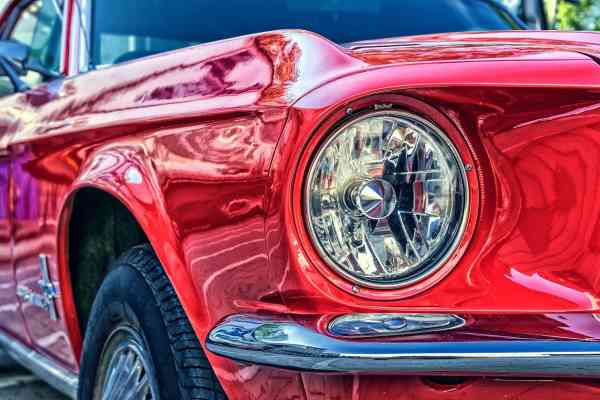November 15th, 2022 | 10:13 CET
BYD, Altech Advanced Materials, Nio - New players in the multi-billion market
Electromobility is seen as having no alternative in the transformation of the transport sector. In 2021 alone, the number of new registrations and the market share of battery-powered vehicles more than doubled. In addition to the charging infrastructure, battery efficiency plays a decisive role in the spread of e-cars. However, a German company is poised to become the new standard on the market by developing a novel coating method. With the establishment of a joint venture, the Company is also researching a revolutionary battery technology that works without the critical raw material lithium.
time to read: 4 minutes
|
Author:
Stefan Feulner
ISIN:
BYD CO. LTD H YC 1 | CNE100000296 , ALTECH ADV.MAT. NA O.N. | DE000A2LQUJ6 , NIO INC.A S.ADR DL-_00025 | US62914V1061
Table of contents:

"[...] We know exactly what we are doing and are implementing what we consider to be a proven technology in an industrially applicable and scalable way. [...]" Uwe Ahrens, Director, Altech Advanced Materials AG
Author
Stefan Feulner
The native Franconian has more than 20 years of stock exchange experience and a broadly diversified network.
He is passionate about analyzing a wide variety of business models and investigating new trends.
Tag cloud
Shares cloud
Altech Advanced Materials - Promising collaborations
The market for grid storage is expected to grow by approximately 28% annually in the coming decades. The global market for battery storage systems is expected to grow from USD 4.4 billion in 2022 to USD 15.1 billion in 2027. In the longer term, it is expected to grow from 20 GW in 2020 to over 3,000 GW in 2050. The revolutionary CERENERGY batteries could get a bigger piece of the pie. The development and production of this promising technology will be carried out by a joint venture between Heidelberg-based Altech Advanced Materials, the Australian company Altech Chemicals Ltd. and the Fraunhofer Institute for Ceramic Technologies and Systems IKTS, the leading battery institute in Germany. Altech Advanced Materials holds a share of 18.75%.
The advantages of SAS-CERENERGY batteries over lithium-ion batteries, which are still considered the standard at the moment, are enormous. CERENERGY batteries are non-flammable and therefore fire and explosion-proof, have a life span of more than 15 years and operate in extremely cold and hot climates. The battery technology uses common salt and small amounts of nickel. In addition, it does not require lithium, cobalt, graphite, or copper and thus functions independently of critical supply shortages and raw materials price increases. The manufacturing costs of CERENERGY batteries are also expected to be around 40% lower than those of comparable lithium-ion batteries, according to Fraunhofer.
The newly founded Altech Batteries GmbH aims to set up a production facility for solid-state batteries at the Schwarze Pumpe site, where the first line with an annual output of 100-MWh is to be implemented. The contract for engineering services for the started feasibility study for the realization of a 100MWh production line for solid-state sodium-alumina batteries has now been awarded to Leadec Automation & Engineering GmbH. Leadec's project team has already started its work on the future production site with the support of Fraunhofer IKTS.
In addition to the CERENERGY joint venture, Altech Advanced Materials also has another hot potato in the fire with a 25% stake in its partner company Altech Chemicals Ltd. The Company's patented Silumina Anodes coating process is a new type of nano coating made of high-purity aluminum oxide and silicon enrichment that increases battery performance by 15% and extends battery life by 30%.
The market capitalization of Altech Advanced Materials is currently EUR 13.56 million. The technologies appear innovative and have game-changer potential. However, it will likely take a few more years until the final realization.
BYD - Buffett presses the Sell button
The operational development is going in the right direction. In addition to strong third-quarter numbers, the Chinese leader in NEV cars further extended its market leadership in October, posting a new sales record of 217,816 NEV vehicles, up 170% from the third quarter of last year. In addition, the signs for the coming years continue to point to expansion. In addition to the launch of a new premium brand, which is planned for the first quarter, expansion into Europe is also to be driven forward.
As reported by "Manager Magazin" with reference to statements by BYD manager Michael Shu, 120,000 automobiles are to be sold in Germany alone in 2026. The Company's goal is to achieve a market share of 10% as quickly as possible. The availability of batteries is not likely to be a problem. After all, the Shenzhen-based company is one of the largest battery manufacturers in the world, and according to experts, its blade technology is one of the safest on the market.
The Blade Battery is not only used in NEV cars but also in buses. The first electric bus with the Blade system was recently unveiled in Singapore. The B12A03 bus, a model developed specifically for the Singapore market, is configured as a twelve-meter-long full low-floor bus with three doors. The bus features a fourth-generation aluminum body and is the first all-electric bus equipped with the Company's proprietary battery.
Despite the positive trend in the Company's development, BYD shares corrected sharply in recent weeks. One of the main reasons was the sale of company shares by investor legend Warren Buffett. As documents from the Hong Kong Stock Exchange show, on November 8, Berkshire Hathaway reduced its holding of more than 5.78 million BYD shares at the price of HKD 196.99, so that the shareholding ratio is now 16.62%. From a chart perspective, the stock formed a double bottom at USD 21.49, rebounding successfully to the upside and breaking the downtrend formed since July 2022. The next more prominent resistance is now at USD 27.13.
Nio - Weak numbers, rising prices
The technical condition of the Chinese follower Nio looks similar. The stock tested its low for the year at USD 9.28 three times. If the resistance at USD 12.38 were to be overcome, there would be considerable room to move up to the vertical resistance zone at around USD 18.30.
After a price loss of around 64%, a bottom now seems to be forming. At least the price trended significantly upwards, even after weak quarterly figures. Nio reported a loss of USD 0.36 per share. Although revenues rose by around 33% YOY to USD 1.8 billion, the forecasts for the final quarter failed to convince analysts. Thus, the group expects revenues in the range of USD 2.44 billion to USD 2.70 billion, while analysts were expecting USD 3.14 billion.
After the heavy losses in the share prices of Chinese electric carmakers Nio and BYD, a bottoming out seems to be taking place. The two segments of Altech Advanced Materials have enormous future potential but are still to be classified as speculative at the current level.
Conflict of interest
Pursuant to §85 of the German Securities Trading Act (WpHG), we point out that Apaton Finance GmbH as well as partners, authors or employees of Apaton Finance GmbH (hereinafter referred to as "Relevant Persons") may hold shares or other financial instruments of the aforementioned companies in the future or may bet on rising or falling prices and thus a conflict of interest may arise in the future. The Relevant Persons reserve the right to buy or sell shares or other financial instruments of the Company at any time (hereinafter each a "Transaction"). Transactions may, under certain circumstances, influence the respective price of the shares or other financial instruments of the Company.
In addition, Apaton Finance GmbH is active in the context of the preparation and publication of the reporting in paid contractual relationships.
For this reason, there is a concrete conflict of interest.
The above information on existing conflicts of interest applies to all types and forms of publication used by Apaton Finance GmbH for publications on companies.
Risk notice
Apaton Finance GmbH offers editors, agencies and companies the opportunity to publish commentaries, interviews, summaries, news and the like on news.financial. These contents are exclusively for the information of the readers and do not represent any call to action or recommendations, neither explicitly nor implicitly they are to be understood as an assurance of possible price developments. The contents do not replace individual expert investment advice and do not constitute an offer to sell the discussed share(s) or other financial instruments, nor an invitation to buy or sell such.
The content is expressly not a financial analysis, but a journalistic or advertising text. Readers or users who make investment decisions or carry out transactions on the basis of the information provided here do so entirely at their own risk. No contractual relationship is established between Apaton Finance GmbH and its readers or the users of its offers, as our information only refers to the company and not to the investment decision of the reader or user.
The acquisition of financial instruments involves high risks, which can lead to the total loss of the invested capital. The information published by Apaton Finance GmbH and its authors is based on careful research. Nevertheless, no liability is assumed for financial losses or a content-related guarantee for the topicality, correctness, appropriateness and completeness of the content provided here. Please also note our Terms of use.




